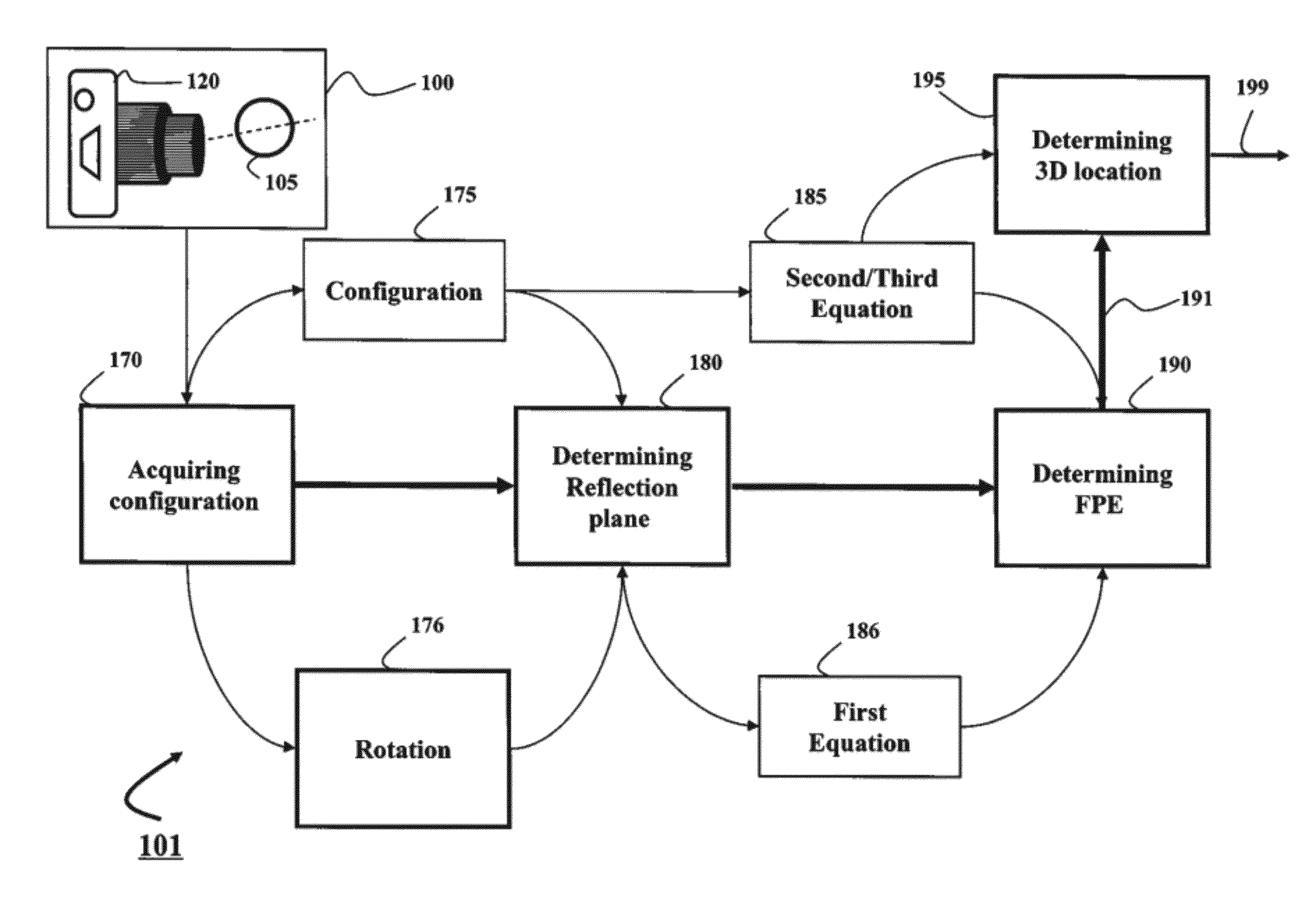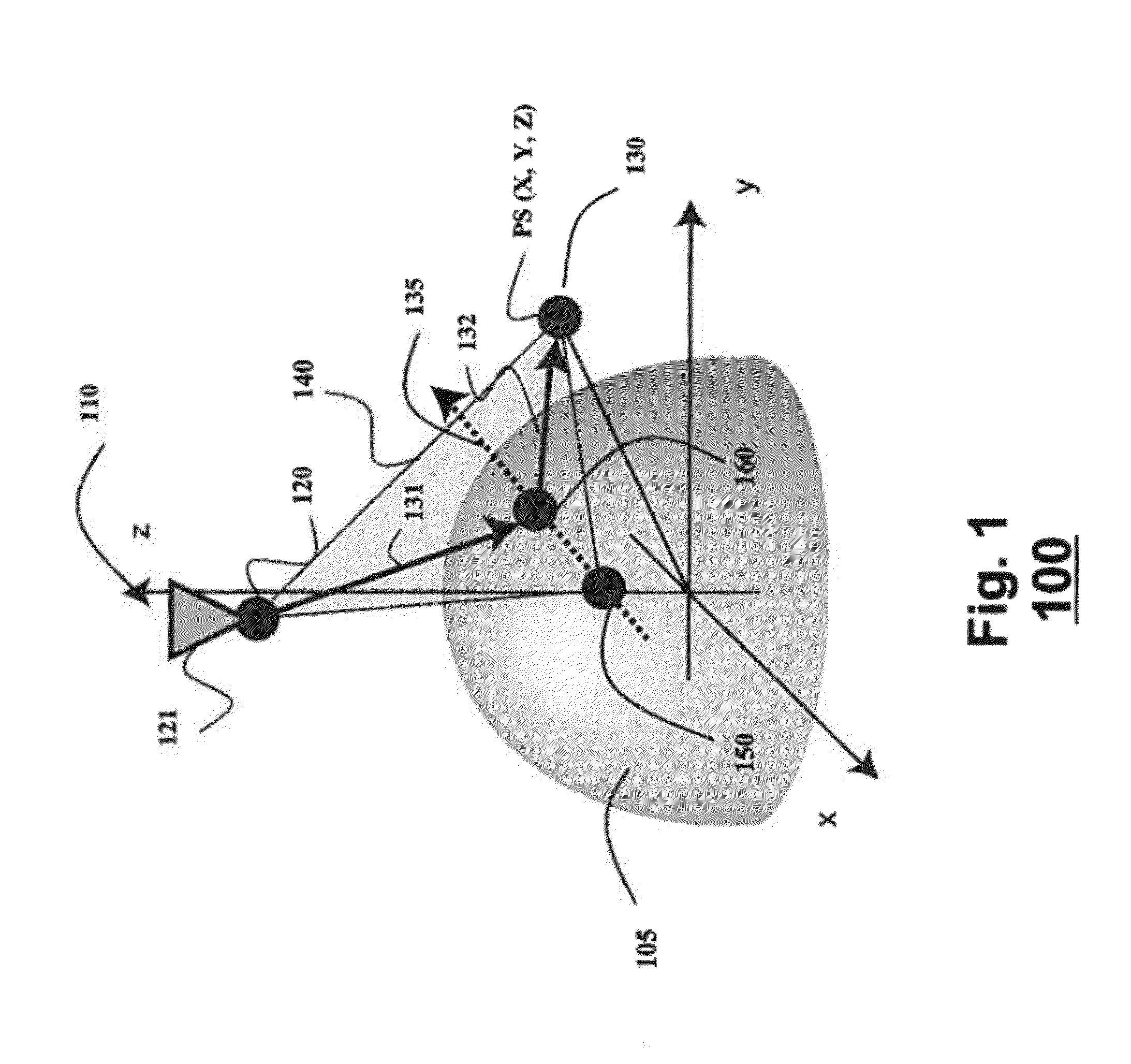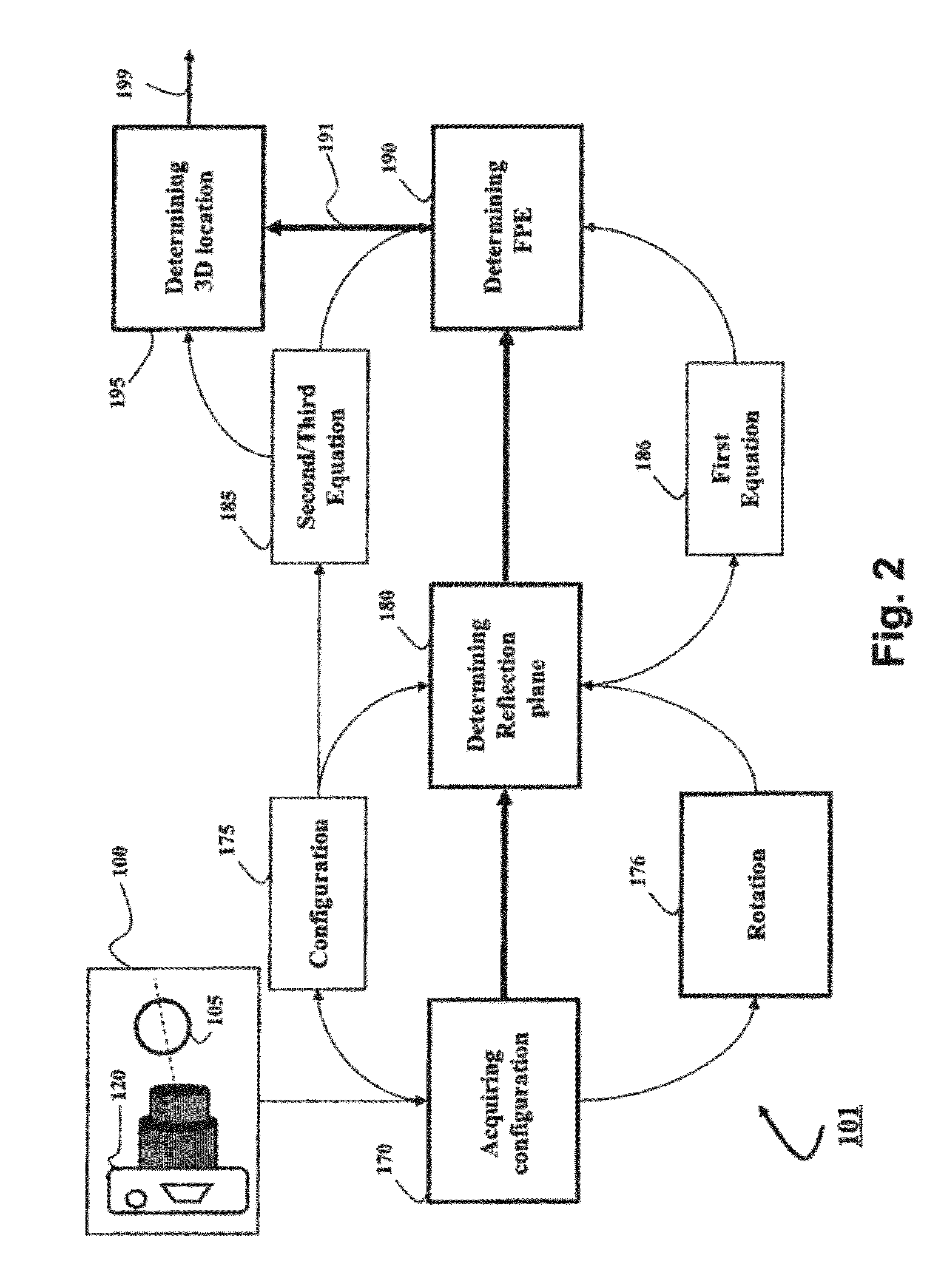Method and System for Determining Projections in Non-Central Catadioptric Optical Systems
a catadioptric optical system and projection technology, applied in image analysis, instruments, computing, etc., can solve problems such as incorrect solutions, skewed 3d estimation, and no analytical solution for general non-central catadioptric systems
- Summary
- Abstract
- Description
- Claims
- Application Information
AI Technical Summary
Benefits of technology
Problems solved by technology
Method used
Image
Examples
Embodiment Construction
[0029]Method and System Overview
[0030]Embodiments of invention are based on a realization that a three-dimensional (3D) location of a reflection point of a ray between a point in a scene (PS) and a center of projection (COP) of a camera of a catadioptric system can be determined analytically using mapping a 3D structure of the catadioptric system on a two-dimensional (2D) plane defined by the COP, the PS, and a point of intersection of a normal of a reflection point with an axis of symmetry of a reflector of the catadioptric system.
[0031]Such configurations include non-central catadioptric systems having a camera arranged at a distance from a surface of the reflector, wherein the surface is quadric and rotationally symmetric around an axis of symmetry. Importantly, for some embodiments, there is no restriction on a position of a center of projection (COP) of the camera used in the catadioptric system. For example, the COP can be arranged outside of the axis of symmetry.
[0032]FIG. 1 ...
PUM
 Login to View More
Login to View More Abstract
Description
Claims
Application Information
 Login to View More
Login to View More - R&D
- Intellectual Property
- Life Sciences
- Materials
- Tech Scout
- Unparalleled Data Quality
- Higher Quality Content
- 60% Fewer Hallucinations
Browse by: Latest US Patents, China's latest patents, Technical Efficacy Thesaurus, Application Domain, Technology Topic, Popular Technical Reports.
© 2025 PatSnap. All rights reserved.Legal|Privacy policy|Modern Slavery Act Transparency Statement|Sitemap|About US| Contact US: help@patsnap.com



